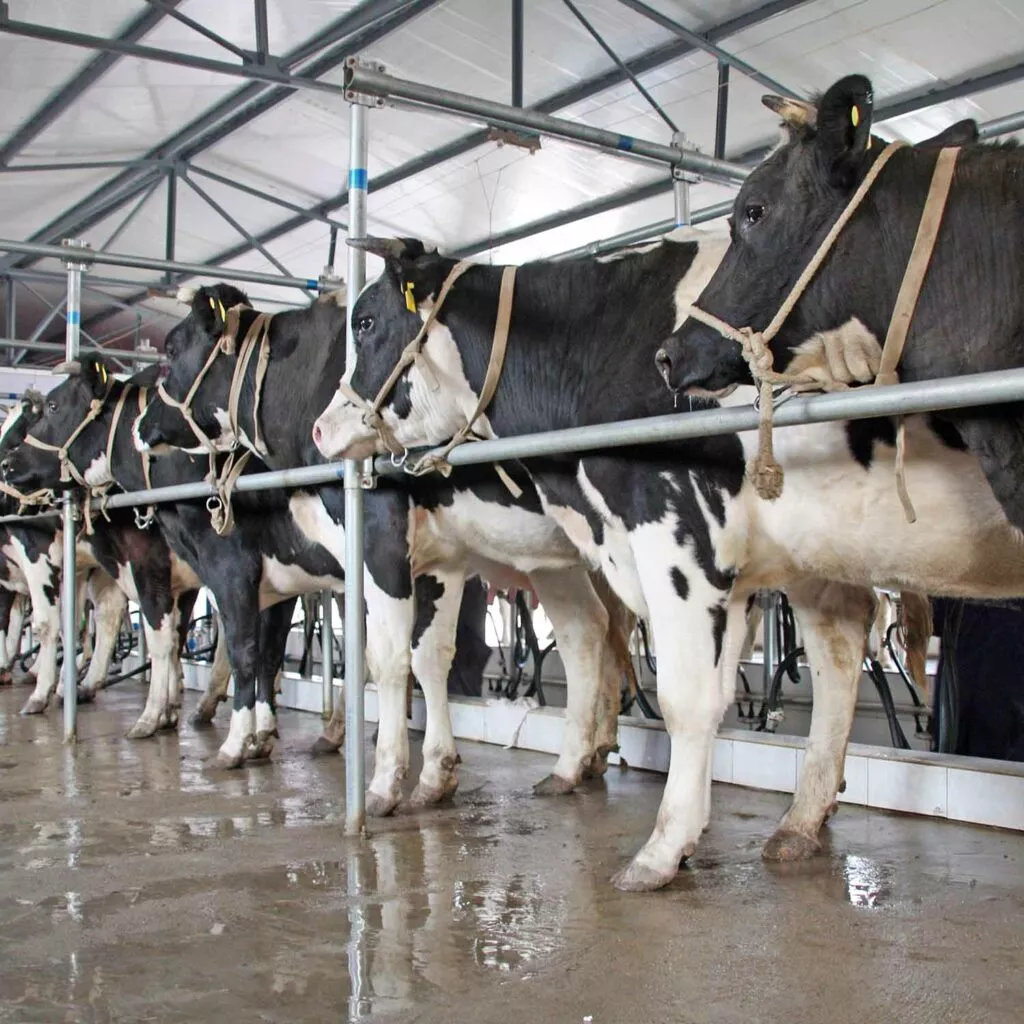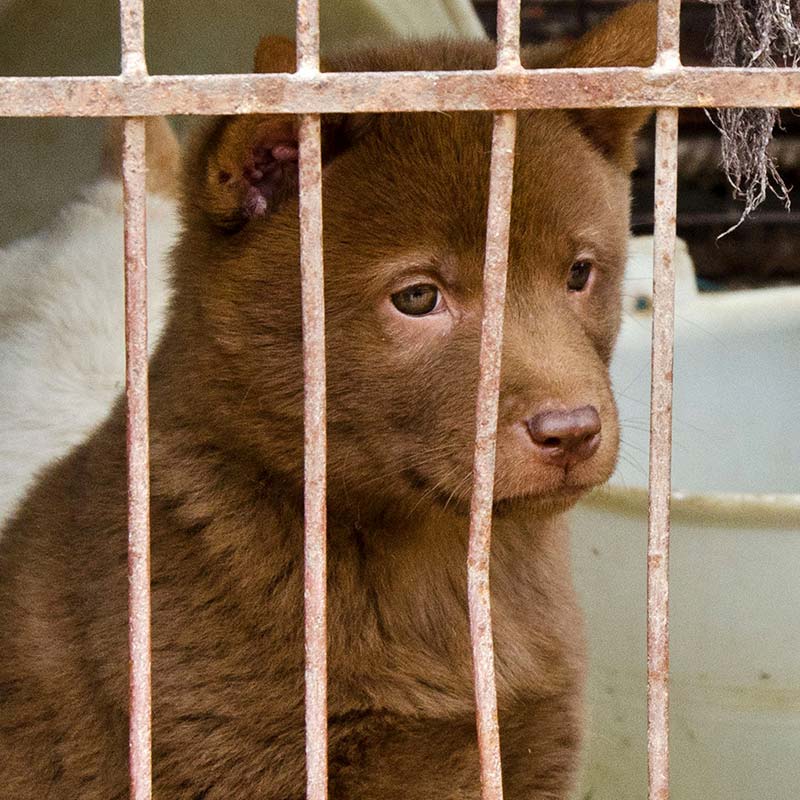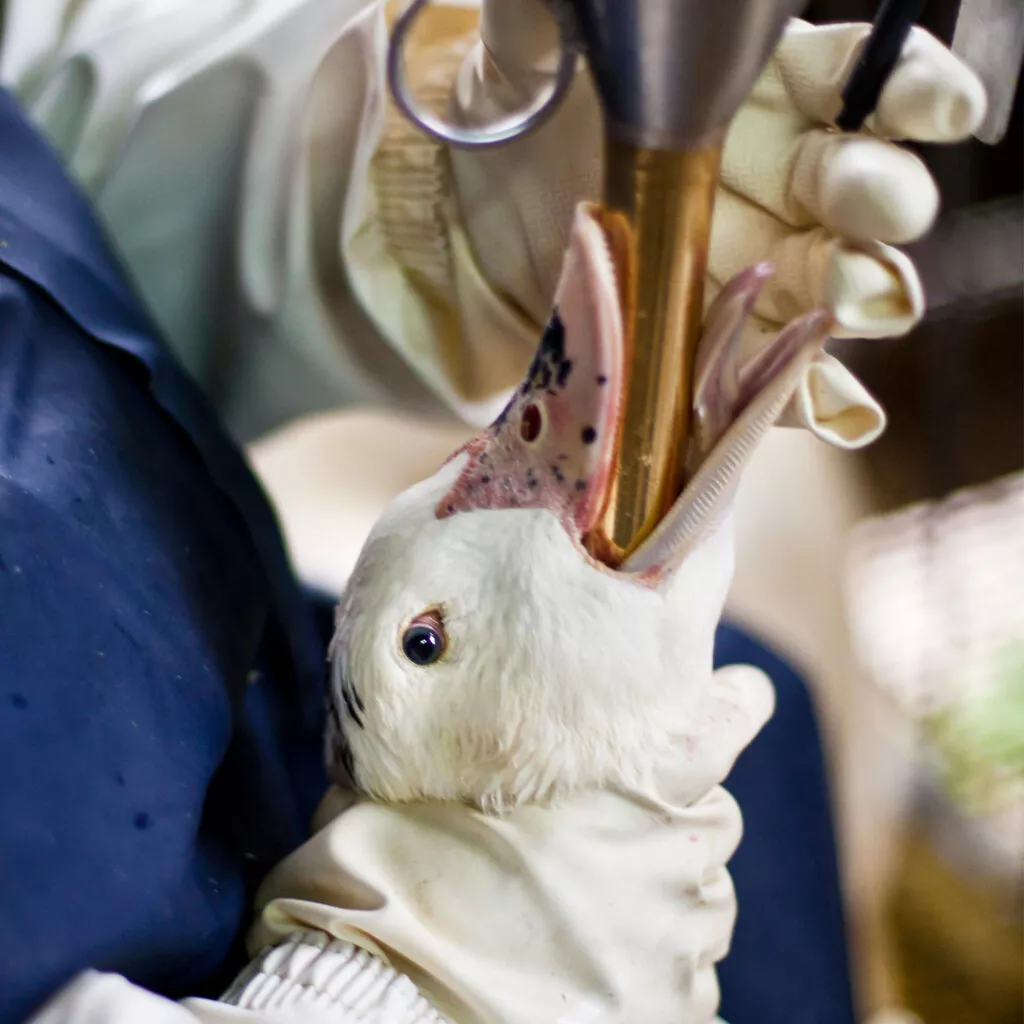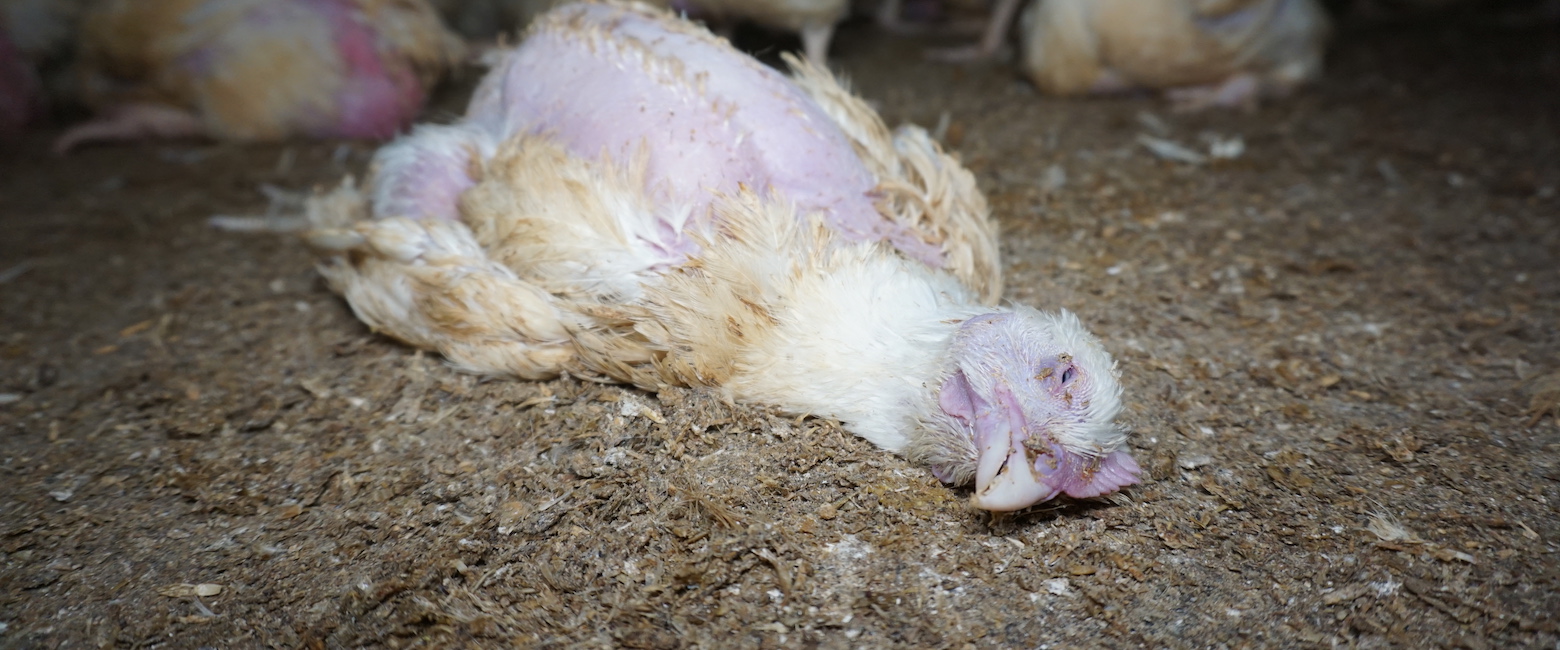
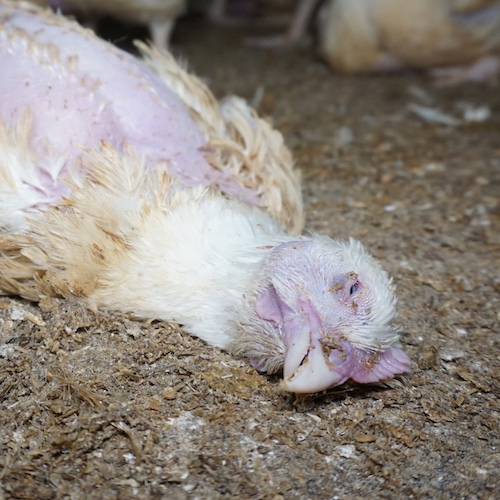
Millions of Chickens Die Before Reaching the Slaughterhouse
Did you know that 20 million chickens die in the U.S. each year before reaching the slaughterhouse? These animals die during transport or while awaiting slaughter.
That’s right: chickens are dying in mass quantities before ever reaching the kill blade.
From harsh living conditions to selective breeding, they endure stress, abuse, and neglect from the moment they’re born until the moment their bodies give in. The industry will continue to profit, and their stories often remain hidden behind closed doors.
Let’s discover exactly what the meat industry doesn’t want you to know:
UNNATURAL GROWTH:
Today’s chickens have been selectively bred to grow 300% faster than they were in 1960. By the time they’re killed, these animals reach the equivalent of a 660-pound human baby.
Selective breeding causes them to spend their miserable lives lying down in their own feces, too heavy to stand up. Some die from infection, while others are unable to reach their food and water. As many as 90% of chickens raised for meat are affected by muscle abnormalities, including “spaghetti meat.” This unnatural growth puts a huge strain on the birds’ legs, hearts, and other organs.
HARSH LIVING CONDITIONS:
As if being bred for obesity isn’t enough, chickens raised on modern farms are deprived of their most basic needs.
Many chickens will never feel the sunlight, apart from when they are loaded onto transport trucks for slaughter. Instead, modern chicken farms keep them under near-constant dim lighting. This artificial light manipulation mimics daylight, prolonging their days. This means they will be more active and eat more.
Because the birds are too heavy to lift themselves off of the ground, ammonia and feces from contaminated soil burns their bodies while causing painful boils. These filthy conditions are a breeding ground for parasites and other pathogens.
To make matters worse, these chickens are crammed into overcrowded sheds. Living animals are forced to live among the dead, and mounting stress often leads to cannibalism.
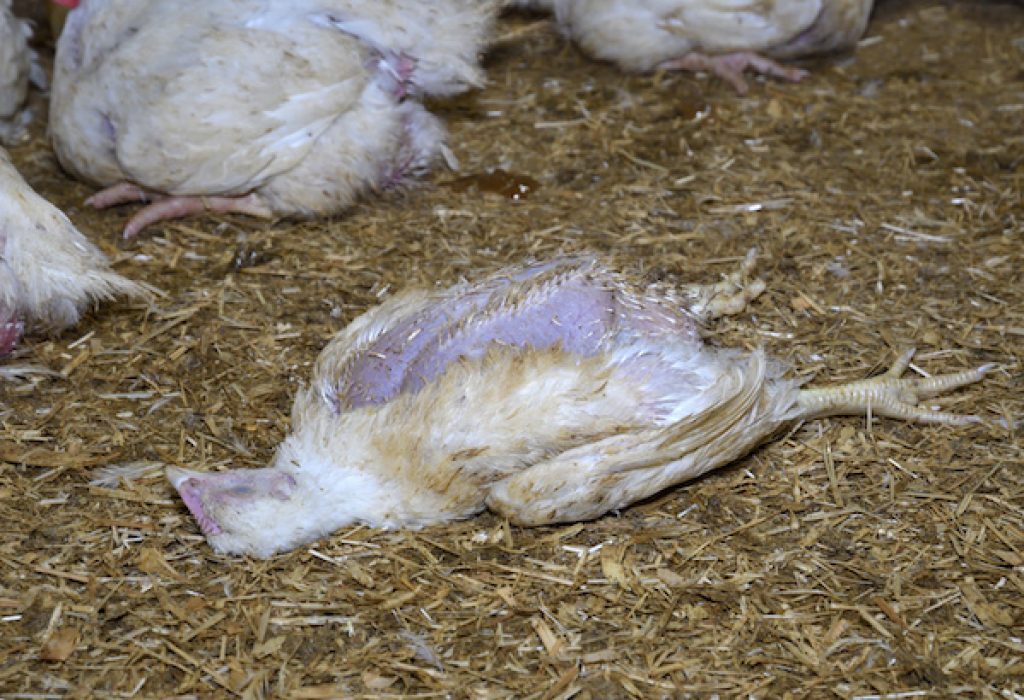
SUDDEN DEATH SYNDROME:
Even chickens who appear healthy can die abruptly. The cause of “sudden death syndrome” has yet to be determined, but it often causes the chickens to lie on their backs and flap their wings rapidly.
Experts note that the fast-growing chickens are prone to stress-related heart conditions, a possible cause for these mysterious deaths.
DEATH DURING TRANSPORT:
If chickens live long enough to make it to their “market weight,” there is still a chance they could die on the way to the slaughterhouse.
During transport, 3,000+ birds are forced into cages and loaded onto a truck, left for several hours without food or water. Some are subjected to extreme weather on their long journey. Many die from heart failure, heat stress, or freezing. Others suffer from injuries due to mishandling.
Shockingly, farmers consider these deaths a routine part of business.
HOW TO DEFEND ANIMALS FROM ABUSE:
The conditions faced by chickens – the most abused land animal on the planet – are hidden behind factory farm doors. The industry is determined to hide the truth and continue profiting from abuse.
The good news is that millions of people around the world refuse to be fooled. By replacing meat, dairy, and eggs with delicious plant-based proteins, you can join them!
Replacing meat from chickens is easier than ever. Whether you’re looking for chicken nugget alternatives or a whole-food protein source, we’ve compiled free materials to get you started today.

CHOOSE LOVE
Chickens are emotionally complex animals capable of empathy and forming special bonds with fellow animals.
Protect these sensitive and social animals by choosing plant‑based alternatives.

